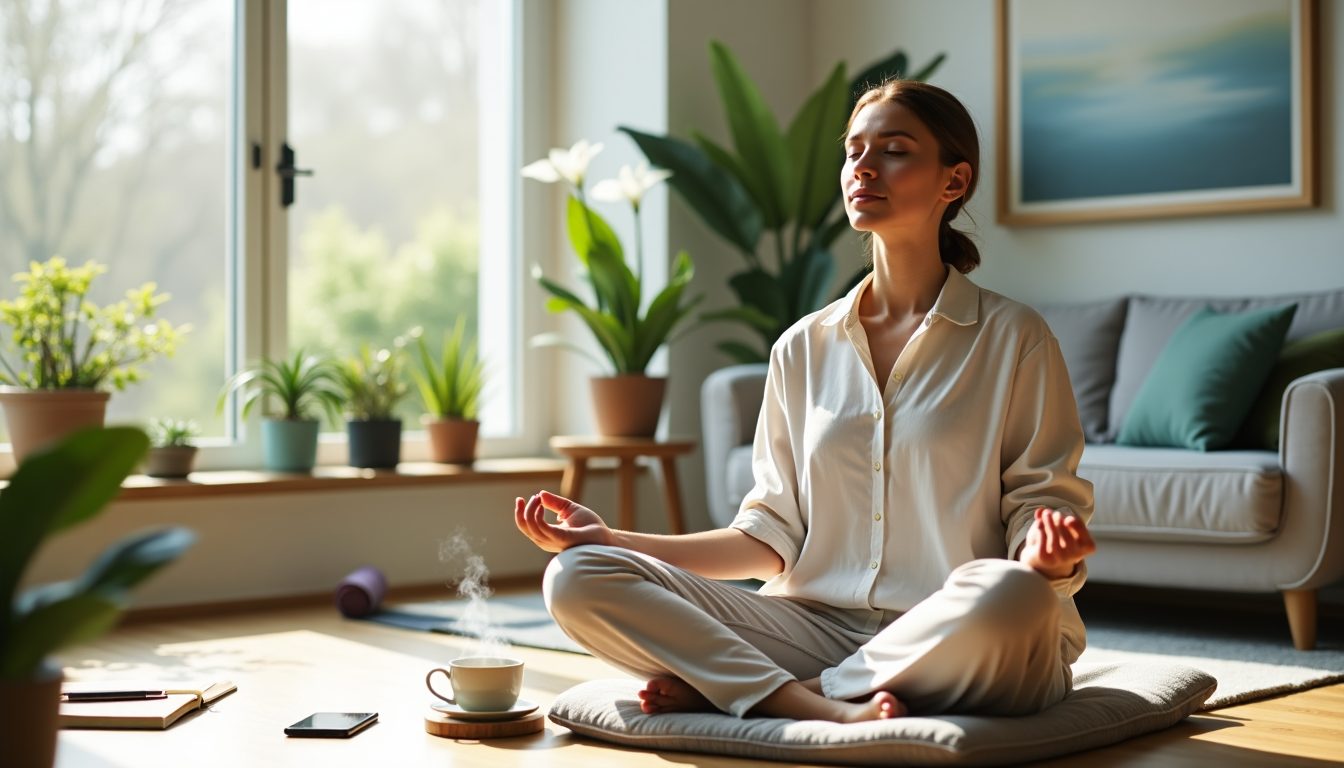How to Use Simple Mental Health Tips That Actually Work in 2025
People need at least 7 hours of sleep every night to stay mentally healthy. Your mental wellbeing depends on more than just getting enough rest. Mental health tips have become valuable resources because people now understand that mental wellbeing goes beyond avoiding health issues – it changes constantly based on what’s happening in our lives.
Many people face mental health challenges, but small steps can make the most important difference. A daily 30-minute workout boosts your mood and cuts down stress naturally. Mindfulness practices help you experience life more deeply. These practical tips work even better when combined with support from others around you, which leads to faster recovery and better overall wellbeing.
This piece shows you proven ways to protect and improve your mental health in 2025. You’ll learn everything from quick daily check-ins to building eco-friendly wellness habits that stick.
Understanding Modern Mental Health Challenges
Mental health challenges have changed by a lot in the last few years. Studies show one in two people will develop a mental health disorder during their lifetime. The mental wellbeing landscape now faces new complexities as society adapts to rapid technological and social changes.
How digital lifestyle disrupts mental health
Digital technology has altered the map of how people experience mental health challenges. Research shows excessive digital use associates with various psychological effects. Adults who keep taking news through television and social media show higher levels of emotional distress. Social media platforms can help people connect, but they also trigger mental health issues through:
- Constant exposure to curated content makes people feel inadequate
- Information overload and endless notifications increase anxiety
- Poor sleep patterns hurt cognitive wellbeing
Common stress triggers in 2025
Today’s stress triggers come from many sources and create a complex web of challenges. Financial worries, global conflicts, and ongoing economic fears rank among the main stressors. On top of that, workplace pressures have grown stronger. This affects young professionals the most, with studies showing 34% of adults deal with high or extreme stress levels often.
The healthcare system has become a source of stress, especially for younger people. Those between 18-24 need time off three times more often than people over 55 because NHS waiting times hurt their health.
Signs of mental health strain
People need to spot early warning signs of mental health challenges quickly. Mental health experts point to several key signs that need attention:
- Changes in sleep or eating patterns
- Quick mood changes and getting irritated easily
- Pulling away from activities once enjoyed
- Problems with focus and memory
- Strong reactions to surroundings
Studies reveal mental illness starts by age 14 in half the cases, and all but one of these cases demonstrate symptoms by age 24. Research also shows 45% of young people struggled with their mental health in the last two years. Physical signs often come with these psychological symptoms. These include unexplained aches, constant headaches, and energy level changes.
Today’s workplace brings extra challenges. One in five people say high stress levels reduce their work quality, yet they keep working without changing their schedules. Only three in ten workers feel fulfilled at work, while 23% feel bored.
Quick Mental Health Checks You Can Do Daily
Mental health checkups are essential tools that help maintain emotional balance. Research shows that two out of three people who do regular mental wellness checks report better mental health.
Morning mental health scan
Your day should start with a mental health check to understand emotional patterns better. You need a system to ask specific questions about your mental state. People who check in with themselves each morning handle their daily emotions better.
The morning scan needs to look at three areas:
- Physical sensations – Look for any tension, discomfort, or energy levels
- Emotional state – Notice your current feelings without judgment
- Mental clarity – Check your focus and thought patterns
Rate your emotional state on a scale of 1-10 during these morning checks and note any big changes from previous days. Your body often signals mental health issues – headaches might mean stress, while stomach problems could indicate anxiety.
Midday reset techniques
Mental energy goes up and down throughout the day. Research proves that planned midday breaks boost brain performance and lower stress. Here are some proven reset techniques:
Clarity Break: Take 5-10 minutes away from your workspace. A quick outdoor break increases productivity hormones like serotonin and dopamine.
Mindful Breathing: Do focused breathing exercises. Just five minutes of mindfulness can relax you as much as taking a vacation.
Physical Movement: Add gentle stretches or short walks to your day. Midday movement makes you feel better and think clearer. You can:
- Roll your neck and shoulders to release tension
- Stretch your lower back to curb sitting strain
- Take short walks to sharpen mental focus
Nutritional Reset: Give your brain the right fuel during breaks. Research explains that omega-3 fatty acids, antioxidants, and glucose work best as brain fuel. Good snacks include:
- Almonds and dark chocolate to boost thinking
- Berries to fight oxidative stress
- Hard-boiled eggs to provide protein energy
Environmental Change: Switch up your surroundings for a bit. Staying in one place too long drains energy and drive. Fresh air from an open window or time outside offers a new point of view.
Quick self-checks during these resets work best. The NHS suggests using standard questionnaires that measure both depression (PHQ-9) and anxiety (GAD-7) levels. These tools track your mental health patterns over time.

